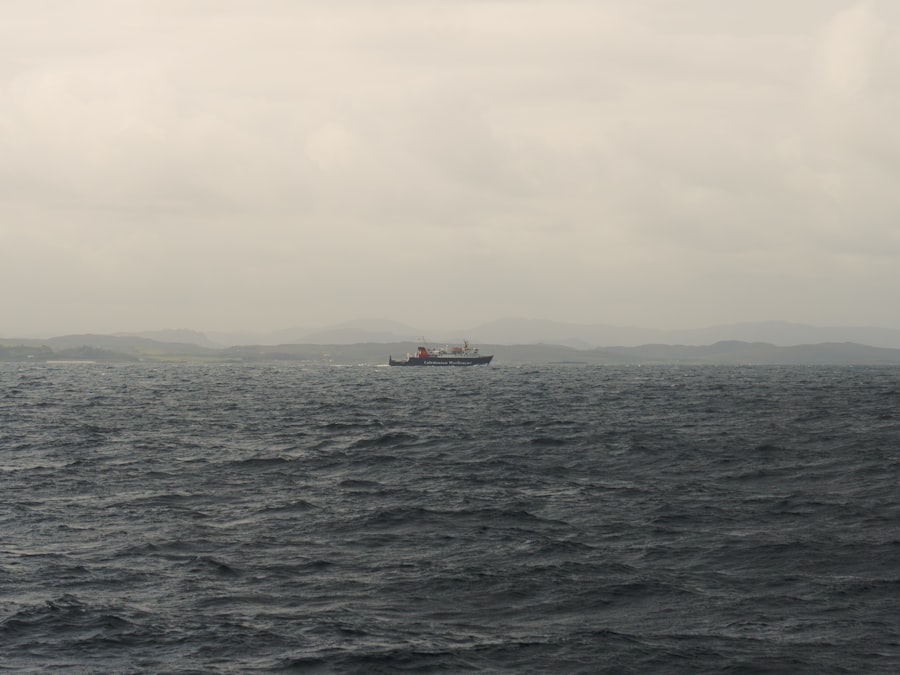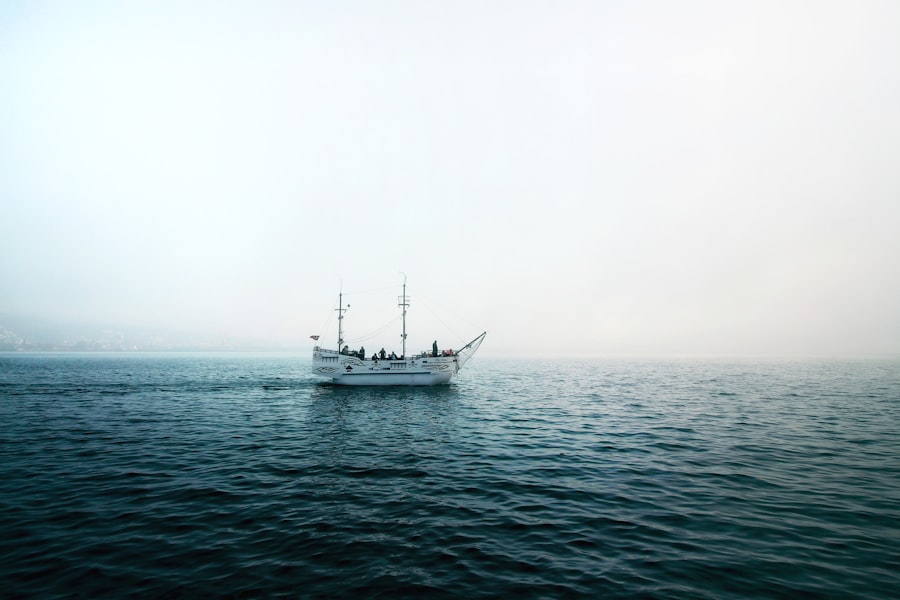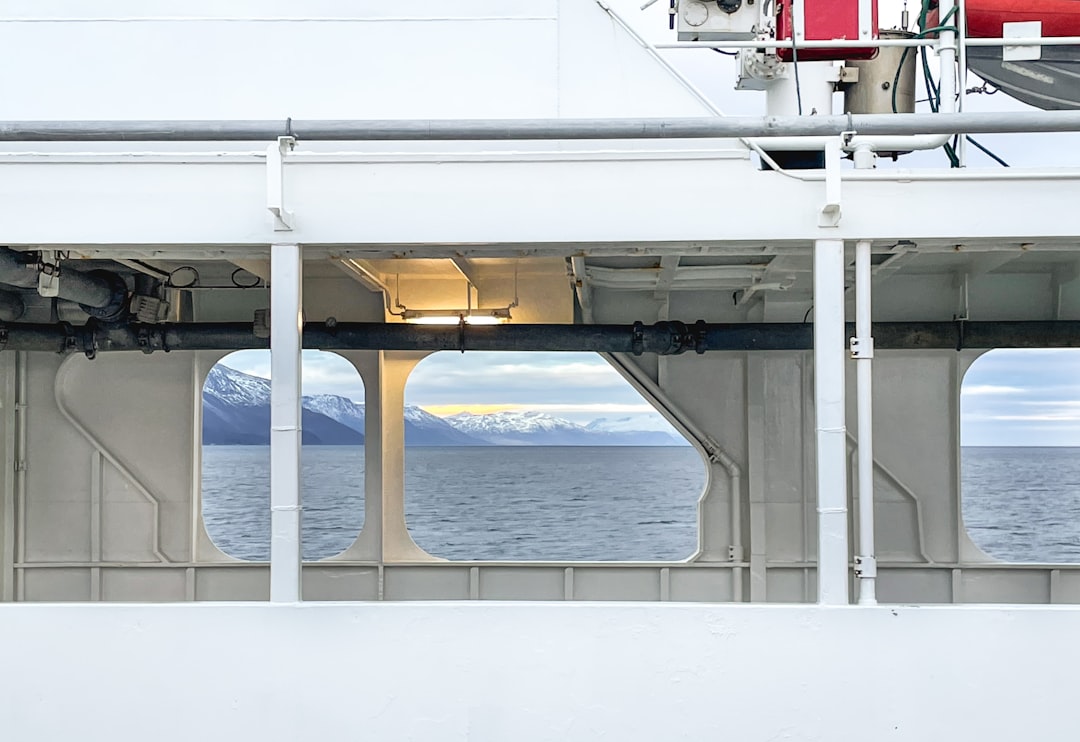The Drake Passage, a body of water situated between the southern tip of South America and Antarctica, is renowned for its tumultuous seas and breathtaking vistas. This narrow stretch of ocean, measuring approximately 600 kilometers (370 miles) wide, serves as a critical conduit for maritime traffic between the Atlantic and Pacific Oceans. Its strategic location not only makes it a vital route for shipping but also a focal point for scientific research and exploration.
The passage is named after the English explorer Sir Francis Drake, who navigated these waters in the late 16th century, and it has since become synonymous with adventure and the unpredictable nature of the sea. The Drake Passage is often characterized by its fierce winds and choppy waters, which can pose significant challenges to even the most seasoned mariners. Despite its reputation for rough seas, the passage also offers a unique opportunity for travelers and researchers alike to experience the raw beauty of nature in one of the most remote regions of the world.
Key Takeaways
- The Drake Passage is a body of water between South America’s Cape Horn and the South Shetland Islands of Antarctica, known for its challenging weather and sea conditions.
- The Drake Passage has a rich historical significance as the route taken by famous explorers such as Sir Francis Drake and Charles Darwin on their voyages of discovery.
- The weather and sea conditions in the Drake Passage are notoriously unpredictable, with strong winds, rough seas, and potential for extreme cold and icebergs.
- The Drake Passage is home to a diverse range of wildlife, including penguins, seals, and whales, and offers stunning natural beauty with its icebergs and dramatic landscapes.
- Crossing the Drake Passage presents challenges such as seasickness, extreme weather, and the need for careful navigation to ensure safety during the journey.
Historical significance of the Drake Passage
The historical significance of the Drake Passage cannot be overstated. It has long been a critical route for explorers, traders, and scientists seeking to navigate between two major oceans. Sir Francis Drake’s expedition in 1578 marked one of the first recorded crossings of this treacherous waterway, paving the way for future explorations.
His journey was not merely a quest for discovery; it was also driven by the desire to find a passage that would facilitate trade and expand European influence in the New World. The passage became a vital link in the Age of Exploration, allowing ships to traverse between Europe and Asia via the southern route. In addition to its role in exploration, the Drake Passage has also been pivotal in scientific research.
The waters are rich in marine biodiversity, making them an ideal location for studying oceanography and climate change. Over the centuries, numerous expeditions have ventured into these waters to gather data on everything from ocean currents to wildlife populations. The passage has thus served as both a historical landmark and a living laboratory, contributing significantly to humanity’s understanding of the planet’s ecosystems.
Weather and sea conditions in the Drake Passage

The weather and sea conditions in the Drake Passage are notoriously unpredictable, earning it a reputation as one of the most challenging maritime routes in the world. The convergence of cold Antarctic waters with warmer currents from the north creates a volatile environment where storms can develop rapidly. Sailors often describe the passage as having “four seasons in one day,” with conditions ranging from calm seas to towering waves that can reach heights of over 10 meters (33 feet).
This variability is largely due to the lack of landmass to break up the winds, allowing them to whip across the open water with little obstruction. Navigating these waters requires not only skill but also an understanding of meteorological patterns. The best time to cross is typically during the austral summer months, from November to March, when conditions are generally more favorable.
However, even during this period, sudden storms can arise without warning, making it essential for mariners to remain vigilant and prepared for any eventuality. The unpredictable nature of the weather in the Drake Passage adds an element of excitement and danger that attracts adventurers from around the globe.
Wildlife and natural beauty of the Drake Passage
| Aspect | Details |
|---|---|
| Wildlife | Penguins, seals, whales, and seabirds can be spotted in the Drake Passage. |
| Natural Beauty | The Drake Passage offers stunning views of icebergs, glaciers, and the surrounding Antarctic landscape. |
| Climate | The climate in the Drake Passage can be harsh, with strong winds and rough seas, but it also contributes to the unique ecosystem and natural beauty of the region. |
| Conservation | Efforts are being made to protect the wildlife and natural beauty of the Drake Passage through conservation initiatives and regulations for tourism and research activities. |
The Drake Passage is not only known for its challenging conditions but also for its stunning natural beauty and rich wildlife. The waters are teeming with life, serving as a feeding ground for various species of marine animals. Among them are majestic whales, including humpbacks and orcas, which can often be spotted breaching the surface or swimming alongside vessels.
Additionally, seabirds such as albatrosses and petrels glide gracefully above the waves, taking advantage of the strong winds that characterize this region. The surrounding landscapes are equally captivating. The rugged coastlines of Cape Horn and the dramatic ice formations of Antarctica create a breathtaking backdrop for those who venture into these waters.
Glaciers calving into the sea and icebergs drifting by add to the ethereal quality of the environment. For many travelers, witnessing this untouched wilderness is a profound experience that underscores the importance of conservation efforts in preserving such fragile ecosystems.
Challenges of crossing the Drake Passage
Crossing the Drake Passage presents numerous challenges that can test even the most experienced sailors. The unpredictable weather patterns can lead to sudden storms, creating treacherous conditions that require quick thinking and adaptability. High waves and strong currents can make navigation difficult, necessitating precise maneuvering to ensure safety.
Additionally, the isolation of this region means that help is often far away, making it crucial for vessels to be well-prepared for emergencies. Moreover, the psychological aspect of crossing the Drake Passage should not be underestimated. The sheer vastness of the ocean can evoke feelings of vulnerability among crew members and passengers alike.
Seasickness is another common challenge faced by those traversing these waters, as even seasoned sailors can find themselves affected by the relentless motion of the waves. Despite these challenges, many adventurers view crossing the Drake Passage as a rite of passage—an experience that tests their limits and rewards them with unforgettable memories.
Time it takes to cross the Drake Passage

The time it takes to cross the Drake Passage can vary significantly depending on several factors, including weather conditions, vessel type, and route taken. On average, a typical crossing can take anywhere from 24 to 48 hours. However, this timeframe can be extended if adverse weather conditions arise or if a vessel encounters delays due to rough seas.
For larger ships or those traveling at slower speeds, such as research vessels or expedition cruises, the crossing may take longer. Travelers embarking on an expedition cruise often find that their journey includes not just a straightforward crossing but also opportunities for exploration along the way.
As such, while the actual crossing may be relatively brief, the overall experience can be enriched by additional activities and excursions that extend their time spent in this remarkable part of the world.
Navigation and safety in the Drake Passage
Navigating through the Drake Passage requires a combination of skillful seamanship and advanced technology. Modern vessels are equipped with sophisticated navigation systems that help mariners chart their course through these challenging waters. GPS technology, radar systems, and sonar equipment play crucial roles in ensuring safe passage by providing real-time data on weather conditions and underwater topography.
Safety protocols are paramount when traversing this unpredictable region. Mariners must be well-versed in emergency procedures and equipped with life-saving gear such as life rafts and personal flotation devices. Regular drills are conducted to ensure that crew members are prepared for any situation that may arise during their journey.
Additionally, communication with other vessels and monitoring weather forecasts are essential practices that contribute to safe navigation through this formidable passage.
Famous expeditions and voyages through the Drake Passage
Throughout history, numerous famous expeditions have traversed the Drake Passage, each contributing to our understanding of this remote region. One notable voyage was led by Ernest Shackleton during his ill-fated Antarctic expedition in 1914. Shackleton’s journey through these treacherous waters became legendary not only for its challenges but also for his remarkable leadership in guiding his crew to safety after their ship became trapped in ice.
Another significant expedition was conducted by oceanographer Jacques Cousteau, who explored the marine life within these waters during his groundbreaking documentaries in the 1970s. Cousteau’s work brought global attention to the ecological importance of the Drake Passage and highlighted its rich biodiversity. These expeditions have inspired countless adventurers and researchers to explore this unique region further, solidifying its place in maritime history.
Tips for preparing for a crossing of the Drake Passage
Preparing for a crossing of the Drake Passage requires careful planning and consideration. Travelers should begin by researching their chosen vessel and itinerary to ensure they are well-informed about what to expect during their journey. Packing appropriate clothing is essential; layers are recommended due to fluctuating temperatures and potential exposure to wind and spray from waves.
Additionally, travelers should consider taking seasickness medication or remedies before embarking on their journey. Familiarizing oneself with safety protocols onboard can also enhance confidence during rough crossings. Engaging with crew members and fellow passengers can provide valuable insights into navigating these waters while fostering camaraderie among those sharing this unique experience.
Modern technology and advancements in crossing the Drake Passage
Advancements in technology have significantly improved safety and navigation through the Drake Passage over recent years. Modern vessels are equipped with cutting-edge navigation systems that utilize satellite technology to provide accurate positioning data even in challenging conditions. These systems allow mariners to plot their courses more effectively while avoiding potential hazards.
Furthermore, innovations in ship design have led to more stable vessels capable of withstanding rough seas more comfortably than ever before. Enhanced hull designs reduce rolling motion while advanced stabilizers help mitigate discomfort during crossings. These technological advancements not only enhance safety but also improve overall passenger experiences as they navigate this iconic waterway.
The allure and adventure of the Drake Passage
The allure of the Drake Passage lies in its combination of natural beauty, historical significance, and adventure. For many travelers, crossing this formidable stretch of water represents a rite of passage—a chance to connect with nature in one of its most raw forms while embracing both its challenges and rewards. The passage serves as a reminder of humanity’s enduring spirit of exploration and discovery.
As modern technology continues to evolve alongside our understanding of this unique environment, future generations will undoubtedly find new ways to appreciate all that the Drake Passage has to offer. Whether it is through scientific research or adventurous voyages, this remarkable body of water will continue to captivate those who dare to traverse its depths—an enduring testament to nature’s power and beauty.
The Drake Passage, a notorious stretch of water between the southern tip of South America and Antarctica, is known for its challenging conditions and unpredictable weather. Crossing this passage can take anywhere from 24 to 48 hours, depending on the sea state and vessel speed. For those interested in learning more about the intricacies of navigating this treacherous route, an insightful article can be found on MyGeoQuest. This article delves into the factors affecting the crossing time and offers tips for travelers embarking on this adventurous journey. You can read more about it by visiting this page.
WATCH NOW! Drake Passage: Earth’s Deadliest Waters Revealed
FAQs
What is the Drake Passage?
The Drake Passage is the body of water between the southern tip of South America and the northern tip of the Antarctic Peninsula. It is known for its rough seas and challenging sailing conditions.
How long does it take to cross the Drake Passage?
The time it takes to cross the Drake Passage can vary depending on weather conditions and the specific route taken. On average, it takes about 2-3 days to cross the Drake Passage by ship.
What factors can affect the crossing time of the Drake Passage?
The crossing time of the Drake Passage can be affected by weather conditions, including strong winds and rough seas. Icebergs and sea ice can also impact the crossing time, as ships may need to navigate around these obstacles.
What is the best time of year to cross the Drake Passage?
The best time of year to cross the Drake Passage is during the austral summer, which runs from November to March. During this time, the weather is relatively milder and there is more daylight, making for a more comfortable and safer crossing.
What types of vessels typically cross the Drake Passage?
Expedition cruise ships, research vessels, and occasionally sailboats are the most common types of vessels that cross the Drake Passage. These vessels are equipped to handle the challenging conditions of the passage.
